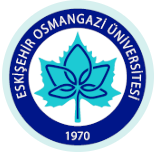ESKİŞEHİR OSMANGAZI UNIVERSITY INSTITUTE OF SOCIAL SCIENCES
VISUAL COMMUNICATION DESIGN DEPARTMENT
Visual Communication Design Master Program
The aim of the program: The program aims to give designers who want to develop themselves or become academicians after graduating from undergraduate studies and who are dealing with the image the opportunity to develop an interdisciplinary perspective in theory and practice. With an updated program within the framework of theoretical and current perspectives, schools, visions and movements of art, design and communication, designers are also offered the opportunity to produce and exhibit projects with a different perspective.
Importance of the program: The Visual Communication Design Master's Program is important in terms of educating liberal, production-based, universal, versatile professionals and academicians who can combine today's current approaches and theoretical discussions with local and universal vision, and reflect the different approaches of the interdisciplinary field to their designs.
Application requirements: In order to apply to the program, you must have graduated from a four-year undergraduate program in related fields such as graphics, graphic arts, graphic design, visual communication design, cinema and television, photography, photography and video, film design, Animation, Advertising, Advertising Design. Although ALES is not required for application, the Foreign Language threshold is set as 40. A science exam is conducted to replace the ALES score. During the application process, 50% of the science exam, 25% of the undergraduate graduation average and 25% of the foreign language score are taken into account and the candidates with the highest score are accepted to the program. Other conditions are announced by the Institute of Social Sciences during the application process, which is held once a year.
Courses in the program:
Advertising Research, Creative Brand Design, Visual Literacy, Information Design, Experimental Typeface Design, Color Theory in Design, Environmental Design Project, Alternative Printmaking Applications, Experimental Approaches in Illustration, Visual Methodology, Visual Sociology Applications, Research Methods in Social Sciences and Publication Ethics.
Acquired skills and academic knowledge:
With its interdisciplinary vision, the Visual Communication Design Master's program is expected to contribute to the academic or professional professional development of students in different fields such as graphic design, photography, advertising, advertising, printmaking, illustration, etc. by providing them with an understanding of current theoretical discussions and application forms, as well as current research, exhibition and presentation forms.
Graduation requirements:
For the Visual Communication Design Master's Program with Thesis, it is compulsory to take 1 compulsory 3 elective (30 ECTS) 4 courses in the fall semester, 1 seminar course and 3 elective (30 ECTS) 4 courses in the spring semester. For the graduation of the program, it is necessary to successfully complete a total of 21 credits / 60 ECTS courses and at least 120 ECTS credits when the specialization course and thesis study are added. The grade of the courses must be at least CC and the academic achievement grade must be at least 3.00 out of 4.00. Specialization course, seminar course and thesis study are non-credit and are evaluated as sufficient or insufficient. At the end of the program, the thesis work must be completed successfully.
Work opportunities after graduation:
Graduates of the Visual Communication Design Graduate Program can work in various graphic design studios, publishing houses, newspapers, magazines, television broadcasting companies, video production companies, advertising companies and institutions serving the public. In addition, graduates with a Master's degree can continue their academic education with Proficiency in Art or related Doctorate programs and work as academicians in higher education institutions.
Visual Communication Design Master's Program Objectives
|
PO1 |
To teach the current debates in the field of Visual Communication Design theoretically. |
|
PO2 |
To enable students to experiment and apply current presentation and exhibition formats for the field of Visual Communication Design. |
|
PO3 |
To explain the definition, meaning, context and approach of interdisciplinary design both theoretically and practically. |
|
PO4 |
To create the opportunity for interdisciplinary work, including knowledge and experience in artistic, sociological, scientific and cultural disciplines. |
|
PO5 |
To teach visual communication, visual culture, visual sociology and social sciences research methods and to provide research planning. |
|
PO6 |
To enable them to apply the methods of critical approach to design in their own fields of specialization. |
|
PO7 |
To gain the ability to make design studies at national and international level, to open exhibitions and to publish papers/articles. |
|
PO8 |
To train academicians in the fields of visual communication design such as graphics, video, photography, illustration, advertising design, original printing, animation. |
Visual Communication Design Master's Program Learning Outcomes
|
LO1 |
To be able to apply various disciplines of visual communication at a universal level. |
|
LO2 |
Görsel İletişim alanının çeşitli disiplinlerini bilimsel, güncel ve teorik düzeyde tartışılabilme ve fikir üretebilme. |
|
LO3 |
To be able to comprehend the interdisciplinary vision of the field and to make productions with this mission. |
|
LO4 |
To be able to identify the problems of the field of Visual Communication Design and to search for solutions. |
|
LO5 |
To be able to create new designs and images with his/her own unique perspective and creative attitude by following current approaches in design. |
|
LO6 |
To be able to pursue a career as a researcher and academician in all areas of visual communication design (graphics, visual communication, photography, video, animation, printmaking, illustration, advertising design, etc.). |

